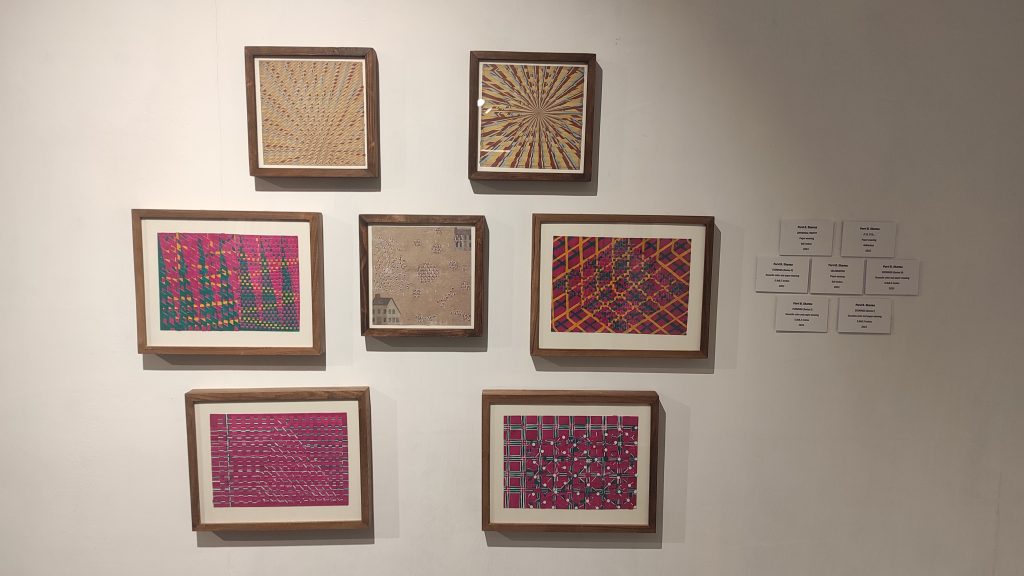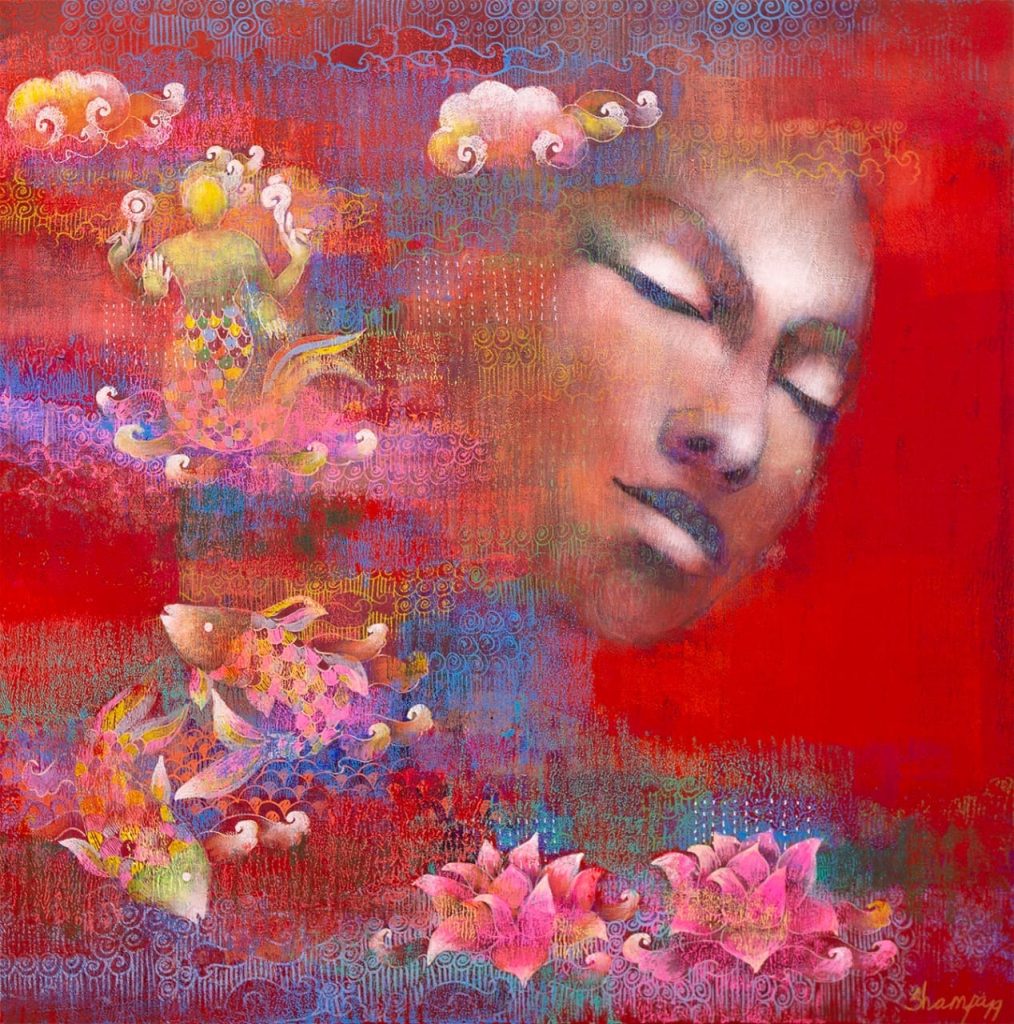A new art show called “Trouvaille” started on the 15th, mainly about understanding oneself better. The ultimate aim is for us to discover our true selves; the artists accomplished this uniquely. They use different ways to evaluate their true and honest self that guides their life in the real world. So, in this exhibition, the artists are showing their lucky discoveries. These discoveries include their life, feelings, experiences, hopes, stories, relationships, and who they are. They employ various methods to assess their genuine and principled nature that directs their actions in reality. The French word “trouvaille” means “find” or “discover” in English. Therefore, it is about uncovering something extraordinary, such as a captivating artwork or an ingenious concept, that ignites delight and is cherished as a magnificent revelation within the realms of our imagination. Thirteen incredibly talented artists hailed as the future of contemporary concepts and narratives. It shows different ways of thinking and how artists have managed to create during the changing talents of the art world, which are being featured in the Trouvaille exhibition. Trouvaille possesses a trendy compilation of artwork that depicts times after the pandemic.
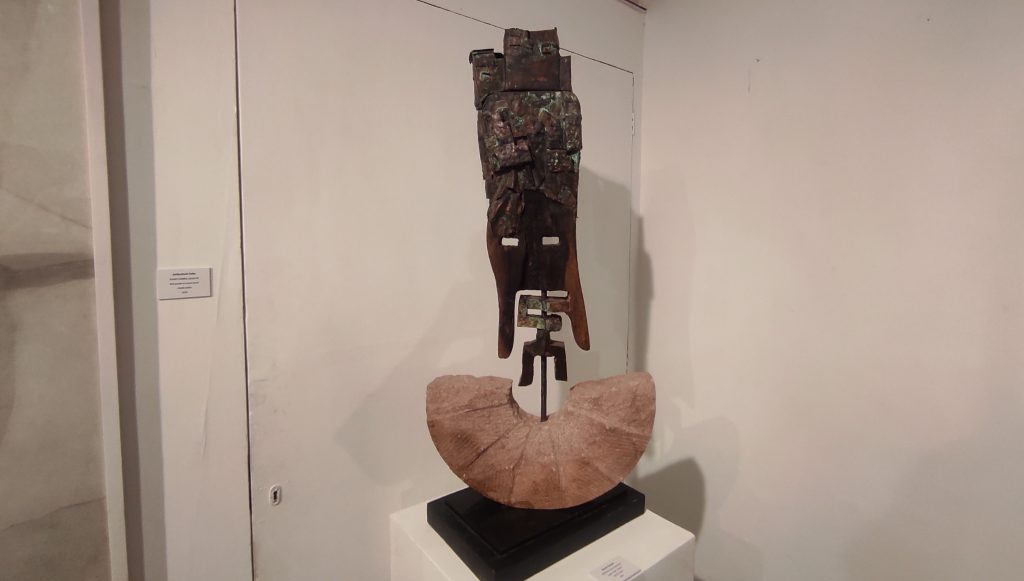
The connection between art and evolution is undergoing changes as our understanding of the subject deepens. Biologist Giacometti Mancini discussed the impact of art on the field of evolution, illustrating well-known instances of artistic contributions to science. These artists demonstrate how crucial it is to be mindful and in the moment through their creative expressions. Their explanations and demonstrations effectively enable us to grasp the current experience of life. The current opportunities compel us to maximise their potential. In this collection, ideas about who we are, our differences, and how we change are really important. They show how the world is changing quickly and becoming more complicated. The artist’s work reflects the present time, making people think and understand different experiences. They make people think about their ability to change and grow and find new ways to succeed even when things are difficult. The profound implications of these remarkable revelations prompt individuals to reflect profoundly upon their own existence. By skillfully guiding them through relatable narratives, they help them delve into the intricate facets of human existence within our rapidly evolving society.
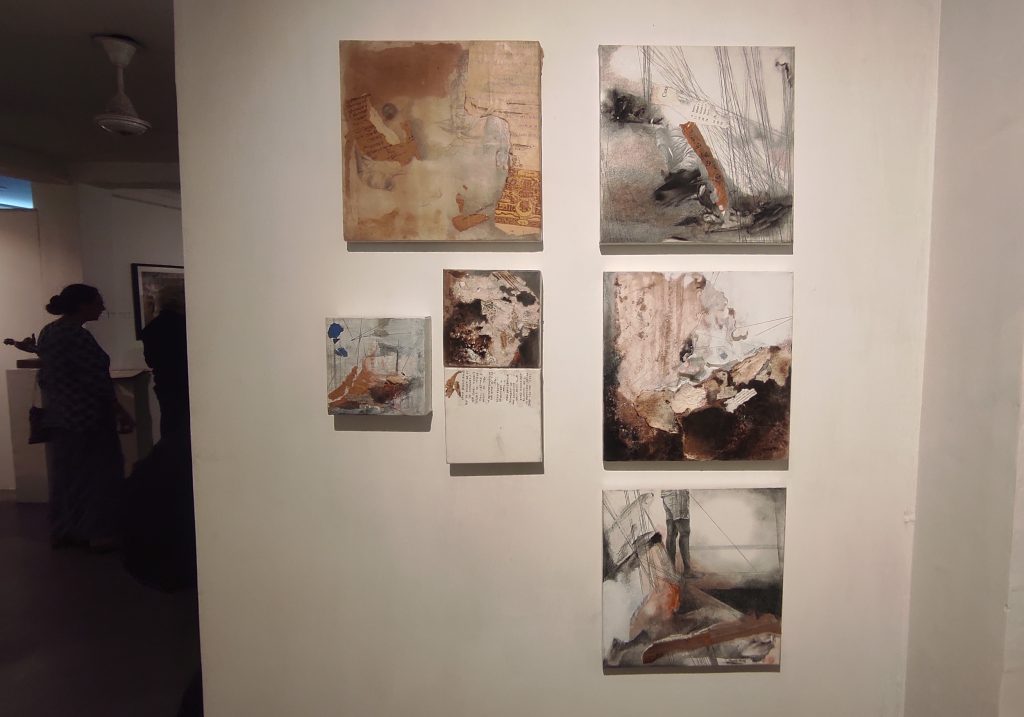
Shruti Binay thinks it is better to paint than to talk. Painting herself is the reason she does it. She uses many different ways to make a flat surface look like it has violence, space, movement, and light. Rahul Wahi’s artwork also shows his continued fascination with how the human body works. He has a blood disorder called thalassemia. In his artwork, he uses lines and flow to show how he sees actions, gestures, and facial expressions. Jyotiprakash Sethy’s art captures and represents personal moments using subtle movement and vibrant colors. He puts one layer of paint on top of another and then removes each layer one at a time. The pictures created by Madhusudan Sharma send a message that it is important to protect freedom without limiting it. The complicated correlation between friendship and romantic love is showcased from an intriguing angle in Tanmay Pal’s Baat-cheet (conversation) and Darshan Reddy’s Lovers. These pieces cleverly examine how people feel close to each other and the challenges that come with being in a romantic relationship. It can be difficult to find a balance in these situations, but doing so is important for creating a strong and meaningful partnership. Stanzin Samphel primarily centers his sculpturesSumesh Bareek also incorporates the essence of nature in his graphic designs. Their artwork serves as a testament to their profound adoration and astonishment towards the stunning landscapes of India and Ladakh.
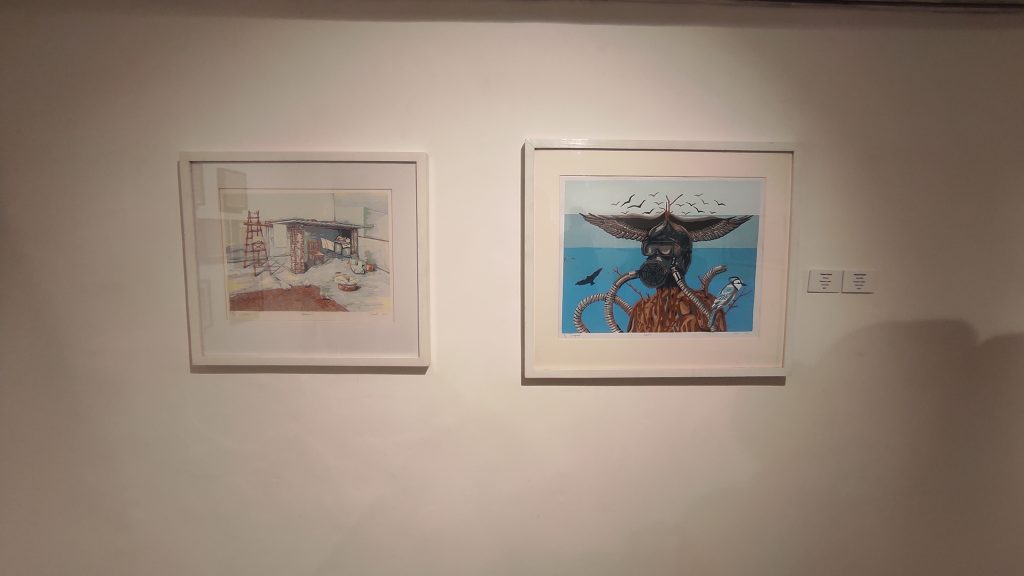
The idea of a sculpture evolved over time and in different places. In this situation, Nishchay Thakur tries to experiment with pre-made items. The art pieces are intentionally designed to make people feel uneasy. They are created to fit a specific location, inspired by Sigmund Freud’s “uncanny” theory. Nishant Khoiya’s sculpture represents the coming together of males and females and the acknowledgment of different gender identities in Hindu beliefs and stories. By employing geometric forms influenced by tantric rituals, Vishwajeet Gautam integrates spiritual customs into his sculptures. The grid in Purvi B. Sharma’s art shows how things are connected, how they go together, and how they are important to each other. The purpose of this paper weaving is to change the way things were done before. Mahendra Singh possesses a great ability to convey stories through visual representations and excels at identifying the significant or captivating aspects of everyday objects. His incredible skill allows him to transform these objects into awe-inspiring creations that greatly inspire those who see them.
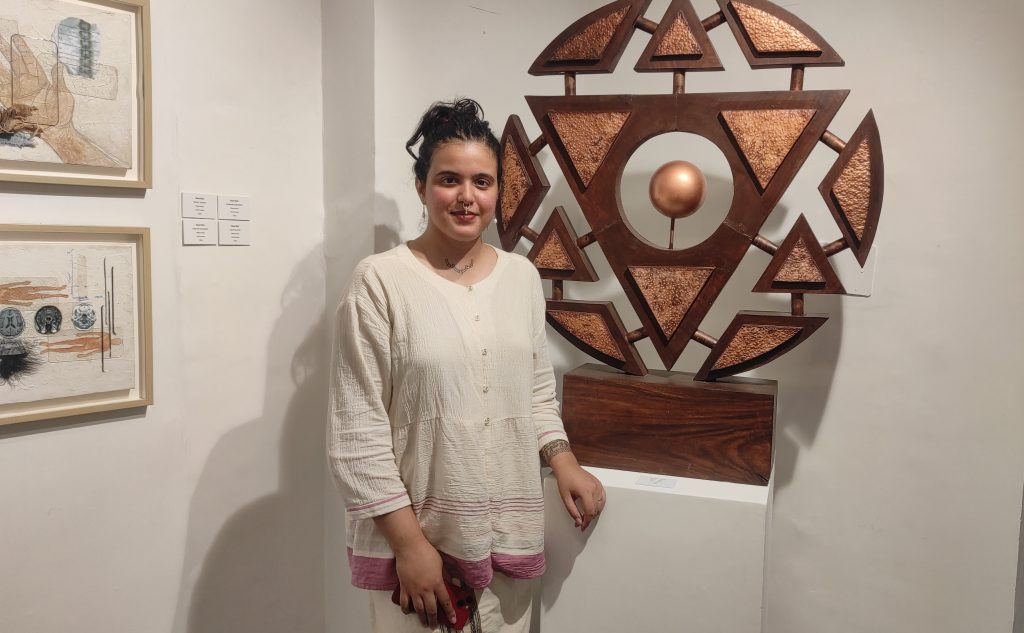
Davangi Pathak in her curatorial note explains, The connection between art and evolution is undergoing changes as our understanding of the subject deepens. Biologist Giacometti Mancini discussed the impact of art on the field of evolution, illustrating well-known instances of artistic contributions to science. These artists demonstrate how crucial it is to be mindful and in the moment through their creative expressions. Their explanations and demonstrations effectively enable us to grasp the current experience of life. The current opportunities compel us to maximize their potential. In this collection, ideas about who we are, our differences, and how we change are really important. They show how the world is changing quickly and becoming more complicated. The artist’s work reflects the present time, making people think and understand different experiences. They make people think about their ability to change and grow and find new ways to succeed even when things are difficult. The profound implications of these remarkable revelations prompt individuals to reflect profoundly upon their own existence. By skilfully guiding them through relatable narratives, they help them delve into the intricate facets of human existence within our rapidly evolving society.
In Gaurav Kumar’s note, it is clear that Shruti Binay thinks it is better to paint than to talk. Painting herself is the reason she does it. She uses many different ways to make a flat surface look like it has violence, space, movement, and light. Rahul Wahi’s artwork also shows his continued fascination with how the human body works. He has a blood disorder called thalassemia. In his artwork, he uses lines and flow to show how he sees actions, gestures, and facial expressions. Jyotiprakash Sethy’s art captures and represents personal moments using subtle movement and vibrant colors. He puts one layer of paint on top of another and then removes each layer one at a time. The pictures created by Madhusudan Sharma send a message that it is important to protect freedom without limiting it. The complicated correlation between friendship and romantic love is showcased from an intriguing angle in Tanmay Pal’s Baat-cheet (conversation) and Darshan Reddy’s Lovers. These pieces cleverly examine how people feel close to each other and the challenges that come with being in a romantic relationship. It can be difficult to find a balance in these situations, but doing so is important for creating a strong and meaningful partnership. Stanzin Samphel primarily centers his sculpturesSumesh Bareek also incorporates the essence of nature in his graphic designs. Their artwork serves as a testament to their profound adoration and astonishment towards the stunning landscapes of India and Ladakh.
Gaurav’s note explains, the idea of a sculpture evolved over time and in different places. In this situation, Nishchay Thakur tries to experiment with pre-made items. The art pieces are intentionally designed to make people feel uneasy. They are created to fit a specific location, inspired by Sigmund Freud’s “uncanny” theory. Nishant Khoiya’s sculpture represents the coming together of males and females and the acknowledgment of different gender identities in Hindu beliefs and stories. By employing geometric forms influenced by tantric rituals, Vishwajeet Gautam integrates spiritual customs into his sculptures. The grid in Purvi B. Sharma’s art shows how things are connected, how they go together, and how they are important to each other. The purpose of this paper weaving is to change the way things were done before. Mahendra Singh possesses a great ability to convey stories through visual representations and excels at identifying the significant or captivating aspects of everyday objects. His incredible skill allows him to transform these objects into awe-inspiring creations that greatly inspire those who see them. The exhibition can be seen at Art Konsult Gallery until September 23rd. Do not miss this event if you live in Delhi.

Contributor


